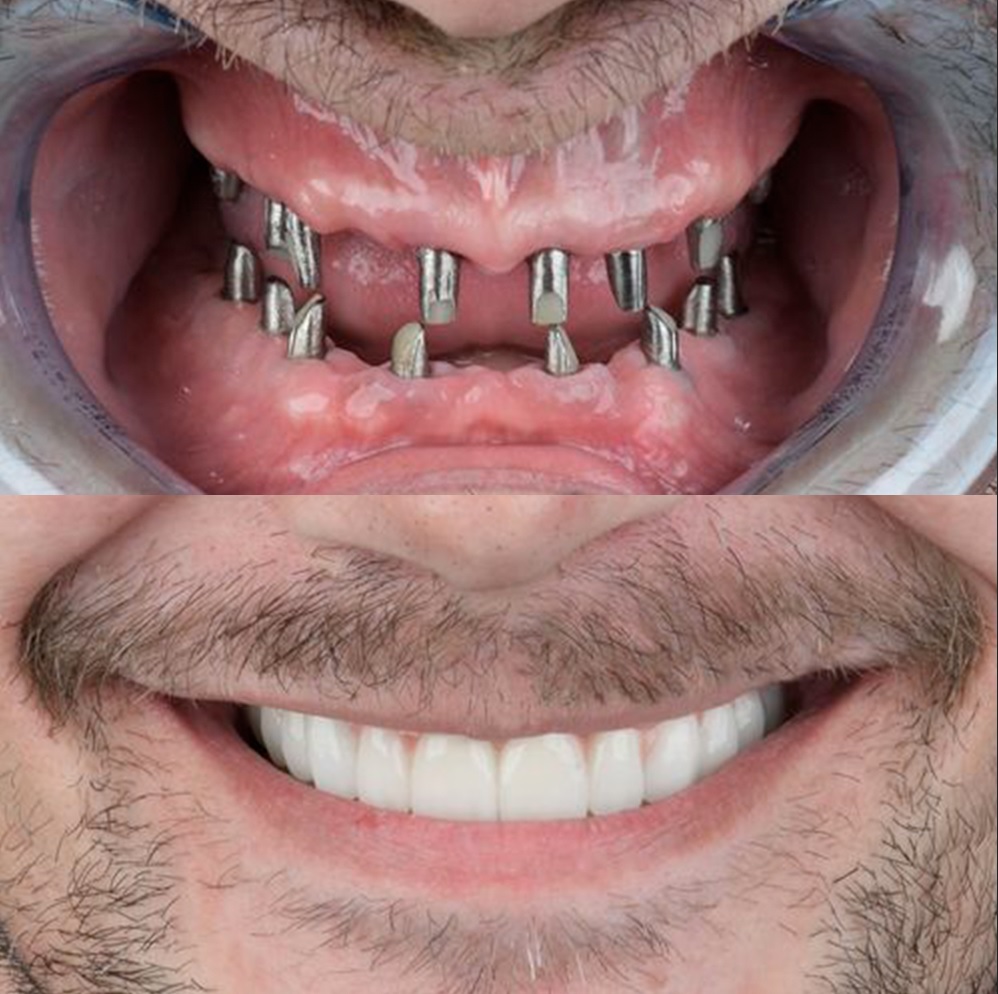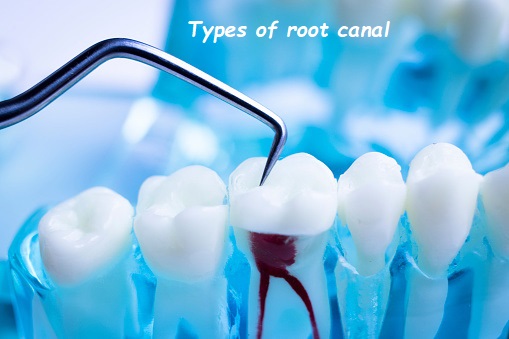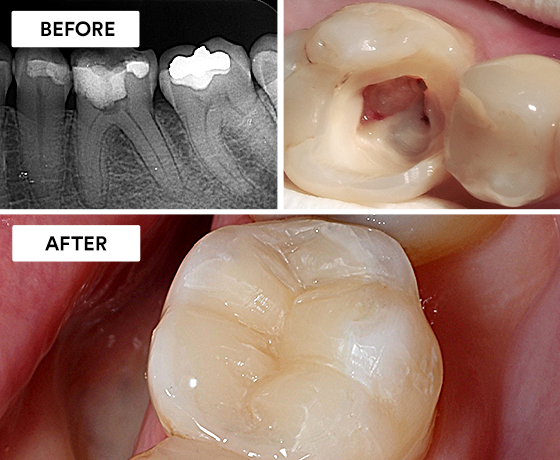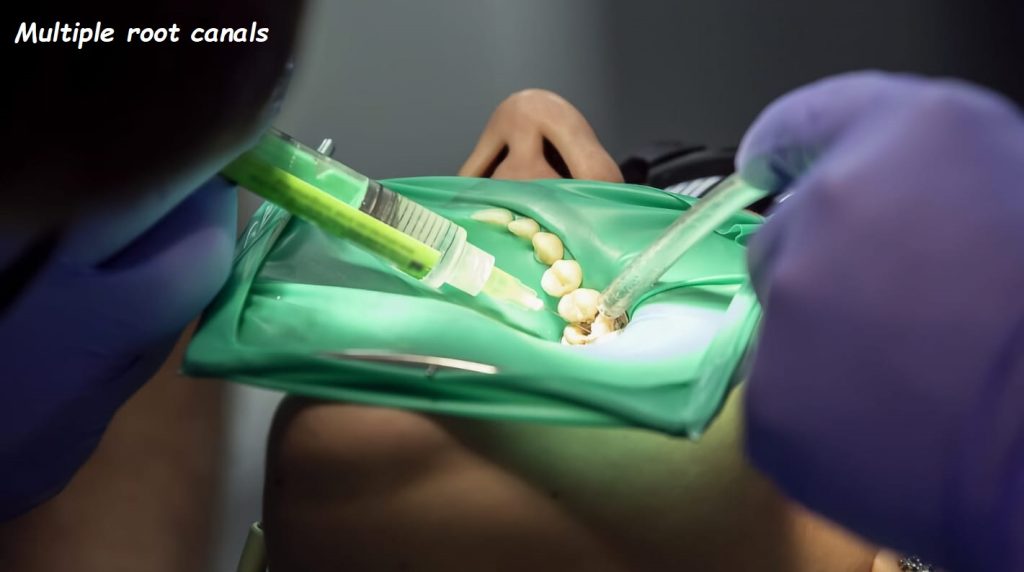root canal front tooth
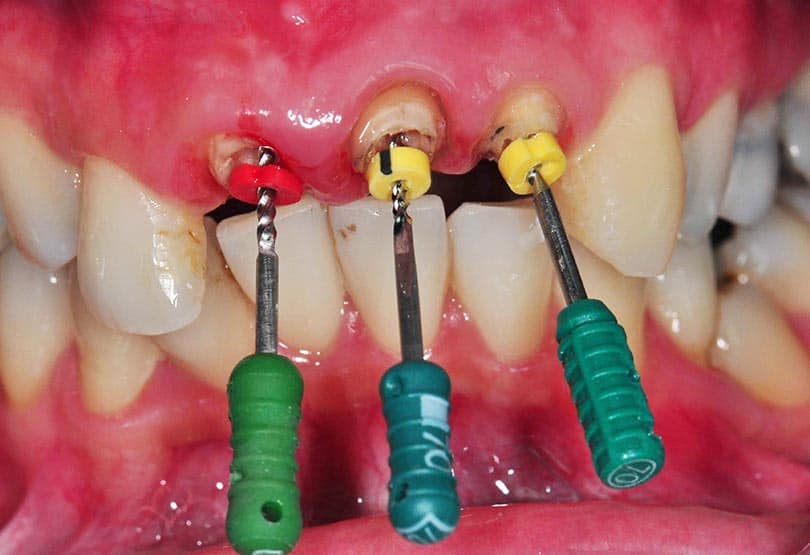
Root Canal on a Front Tooth: Comprehensive Guide
A root canal on a front tooth is a common dental procedure designed to save a tooth that is severely infected or damaged. This procedure not only alleviates pain but also helps maintain the natural tooth structure, preventing the need for more invasive treatments like tooth extraction and replacement. In this guide, we’ll explore the reasons for needing a root canal on a front tooth, the steps involved in the procedure, aftercare, and long-term outcomes.
Understanding the Need for a Root Canal on a Front Tooth
Several factors can necessitate a root canal on a front tooth:
- Deep Decay: Extensive decay that reaches the pulp of the tooth, which contains nerves and blood vessels, can cause severe pain and infection, requiring a root canal.
- Trauma or Injury: An injury or trauma to a front tooth, such as a crack or fracture, can expose the pulp, leading to infection and necessitating a root canal.
- Repeated Dental Procedures: Multiple dental procedures on the same tooth can cause irritation and inflammation of the pulp, eventually leading to the need for a root canal.
- Severe Gum Disease: Advanced periodontal disease can affect the root of a front tooth, causing infection that may require root canal therapy.
Symptoms Indicating the Need for a Root Canal
Recognizing the symptoms that indicate a root canal on a front tooth is crucial for timely treatment. Common signs include:
- Severe Toothache: Persistent and intense tooth pain, especially when chewing or applying pressure, can indicate pulp infection or inflammation.
- Sensitivity to Hot and Cold: Prolonged sensitivity to hot and cold temperatures, even after the stimulus is removed, is a common sign of pulp damage.
- Discoloration of the Tooth: A darkened or discolored front tooth can signal damage to the pulp, often resulting from trauma or infection.
- Swelling and Tenderness: Swelling and tenderness in the surrounding gums can indicate an abscess, which often accompanies a pulp infection.
- Pimple on the Gums: The appearance of a pimple or boil on the gums near the affected tooth can be a sign of an abscess, requiring immediate attention.
The Root Canal Procedure for a Front Tooth
The root canal procedure for a front tooth involves several steps, typically completed over one or two dental visits:
- Diagnosis and Examination: The process begins with a thorough examination, including X-rays, to assess the extent of the infection or damage and plan the treatment.
- Local Anesthesia: To ensure a pain-free experience, the dentist administers local anesthesia to numb the affected tooth and surrounding area.
- Access Opening: The dentist creates a small opening in the front tooth to access the pulp chamber and root canals.
- Removal of Infected Pulp: Using specialized instruments, the dentist carefully removes the infected or damaged pulp from the chamber and canals.
- Cleaning and Shaping: The empty canals are meticulously cleaned and shaped to remove any remaining debris and prepare them for filling.
- Filling the Canals: The cleaned canals are filled with a biocompatible material called gutta-percha, which seals the canals and prevents re-infection.
- Temporary Filling: A temporary filling is placed to close the access opening, protecting the tooth until a permanent restoration is applied.
- Permanent Restoration: In a subsequent visit, the temporary filling is removed, and a permanent restoration, such as a crown or composite filling, is placed to restore the tooth’s function and appearance.
Aftercare and Recovery
Proper aftercare is essential for a smooth recovery and long-term success of a root canal on a front tooth. Here are some aftercare tips:
- Pain Management: Mild discomfort and sensitivity are common after the procedure. Over-the-counter pain relievers, such as ibuprofen or acetaminophen, can help manage any post-procedure pain.
- Avoiding Hard Foods: To prevent damaging the temporary filling or newly restored tooth, avoid chewing on hard or crunchy foods until the permanent restoration is in place.
- Maintaining Oral Hygiene: Continue to brush and floss your teeth regularly, taking care to be gentle around the treated area. Maintaining good oral hygiene prevents further infection.
- Follow-Up Appointments: Attend all follow-up appointments as scheduled to ensure proper healing and monitor the success of the root canal treatment.
Benefits of Root Canal on a Front Tooth
Opting for a root canal on a front tooth offers several benefits:
- Pain Relief: The primary goal of a root canal is to relieve the severe pain caused by an infected or damaged pulp.
- Preservation of Natural Tooth: A root canal allows you to keep your natural tooth, maintaining your smile’s appearance and preventing the need for more invasive treatments like extraction.
- Improved Function: Restoring a front tooth with a root canal enables normal chewing and biting functions, preventing adjacent teeth from shifting.
- Enhanced Aesthetics: By preserving the natural tooth, a root canal helps maintain the aesthetics of your smile, especially important for front teeth.
Potential Risks and Considerations
While root canals are highly successful procedures, there are some risks and considerations to be aware of:
- Post-Procedure Sensitivity: Some patients may experience sensitivity or discomfort after the procedure, which usually subsides with time.
- Re-Infection: In rare cases, the tooth may become re-infected, requiring further treatment or retreatment.
- Tooth Fracture: A treated tooth can become brittle and more prone to fracture. A crown or other restoration can help protect the tooth from breaking.
- Allergic Reactions: Although rare, some patients may have allergic reactions to the materials used in the filling or crown.
Advances in Root Canal Treatment
Modern advancements in dental technology have significantly improved the root canal procedure, making it more efficient and comfortable:
- Digital Imaging: Advanced imaging techniques, such as digital X-rays and cone-beam computed tomography (CBCT), provide detailed images for accurate diagnosis and treatment planning.
- Rotary Endodontics: The use of electric rotary instruments has made cleaning and shaping the root canals more precise and less time-consuming.
- Laser-Assisted Procedures: Lasers can be used to clean and disinfect the root canals more effectively, reducing the risk of re-infection.
- Biocompatible Materials: Newer, more biocompatible filling materials improve the success rate and longevity of root canal treatments.
Home Remedies and Natural Support
While professional dental care is essential, some home remedies and natural approaches can support oral health during and after root canal treatment:
- Saltwater Rinse: Rinsing with a saltwater solution can reduce inflammation and help keep the mouth clean. Use it several times a day for relief.
- Clove Oil: Clove oil has natural analgesic and antiseptic properties. Applying a small amount to the affected area can help alleviate pain and reduce infection.
- Cold Compress: Applying a cold compress to the outside of the cheek can help reduce swelling and numb pain.
- Herbal Teas: Herbal teas like chamomile and peppermint have anti-inflammatory properties that can soothe gums and reduce discomfort.
Long-Term Care and Maintenance
Maintaining the health of a tooth that has undergone a root canal is crucial for its long-term success. Here are some strategies for long-term care:
- Consistent Oral Hygiene: Brush your teeth at least twice a day and floss daily to prevent plaque buildup and maintain overall oral health.
- Regular Dental Checkups: Schedule regular checkups and professional cleanings with your dentist to monitor the health of the treated tooth and surrounding teeth.
- Protective Measures: If you grind your teeth at night, consider using a night guard to protect your teeth from excessive wear and potential fractures.
- Healthy Diet: Maintain a balanced diet and limit sugary snacks and beverages. Pay attention to hidden sugars in processed foods and opt for healthier alternatives.
- Avoiding Bad Habits: Refrain from using your teeth to open packages or chew on hard objects, which can cause damage to the restored tooth.
Psychological Impact of a Root Canal on a Front Tooth
Undergoing a root canal on a front tooth can have significant psychological benefits. The front teeth play a crucial role in your appearance and confidence, and restoring them can improve your overall quality of life.
- Self-Esteem: A beautiful smile can enhance self-esteem and confidence. Restoring a front tooth with a root canal can make you feel more comfortable in social and professional interactions.
- Anxiety Relief: Concerns about dental appearance and function can cause anxiety. Getting a root canal can alleviate this anxiety by providing a durable and aesthetically pleasing solution.
- Improved Speech and Function: A well-treated front tooth can improve the function of your teeth, aiding in clear speech and efficient chewing, which can positively impact your daily life.
- Social Interactions: Feeling confident about your smile can enhance social interactions and encourage you to engage more actively in social activities.
Conclusion
A root canal on a front tooth is a common and effective procedure to save a tooth that is severely infected or damaged. Understanding the need for a root canal, the symptoms indicating the need, the procedure itself, aftercare, and long-term outcomes are essential for making informed decisions and ensuring the longevity of the treatment. With advancements in dental technology, the root canal procedure has become more efficient and comfortable, providing lasting relief and restoration. By maintaining good oral hygiene, visiting your dentist regularly, and taking preventive measures, you can ensure the health and stability of your teeth and enjoy a confident, pain-free smile.


